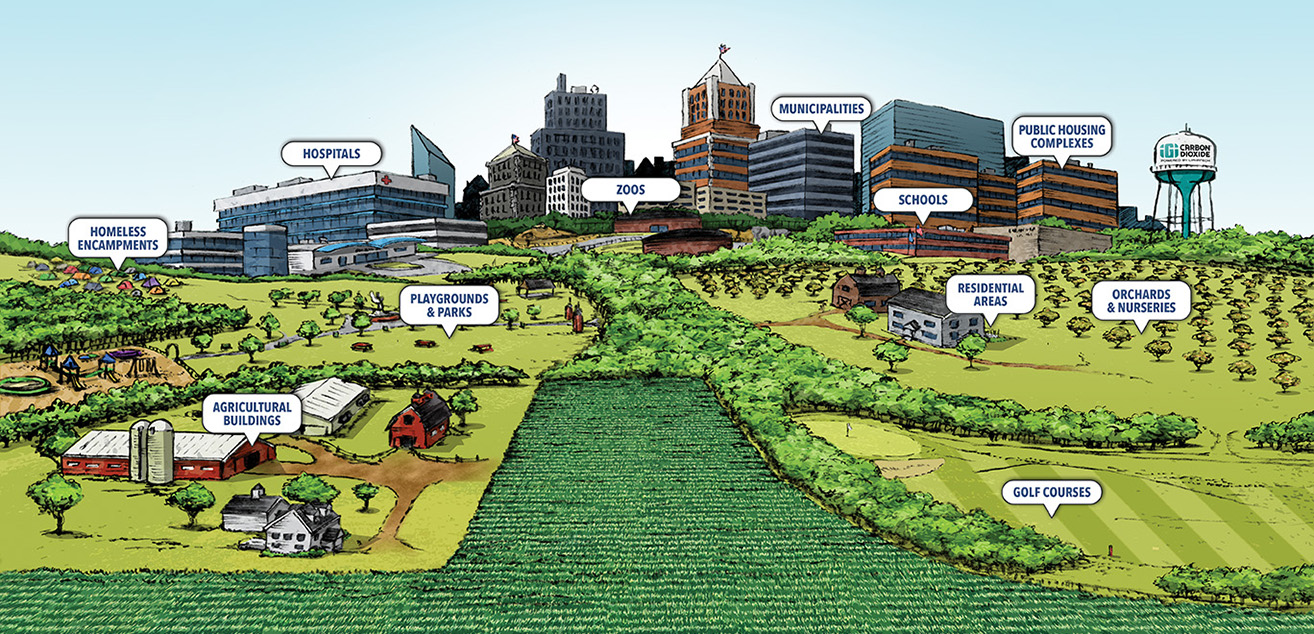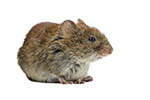
What Is IGI CO2?
IGI CO2 is different because it functions only when it is released in a confined space such as in burrowing rodent tunnel structures. Only then do the effects of this gas become active and within a very short period of time, pests confined in this space succumb as suffocation occurs. Primary benefits of IGI CO2 include:
- Approved for use in municipal, residential, commercial and field settings.
- Can be used next to occupied buildings.
- CO2 gas is non-flammable, invisible and odorless.
- Quiet application.
- Certified for use in pest management programs under the USDA National Organic Program.
Where Can IGI CO2 Be Used?
IGI CO2 is approved for outdoor use only in field settings and in grounds and landscaping around municipal, residential and commercial buildings.

What Kinds of Pests Can I Control with IGI CO2?
This product is used to kill burrowing pests. Each pest has underground burrow or tunnel systems that are different.

Norway Rats
Makes a network of interconnecting tunnels 2 to 3 inches across, up to 1.5 feet deep and 6 feet long. Such a network contains one or more chambers for nesting and feeding, one or more main entrances, and several escape exits.

Ground Squirrels
Several animals may occupy one burrow, which typically is 3 to 6 inches wide and 5 to 200 feet long. Burrows are generally under logs, trees or rocks when available, otherwise are out in the open with a mound at the main entrance.

Groundhogs
Groundhogs are diggers. They excavate tunnels and burrows underground, in which they live and raise young. The tunnel may have up to five entrances and 50 feet of total tunnel distance, including living and hibernation dens.

Pocket Gophers
Makes two kinds of burrows; those near the surface for food gathering and deeper ones for storage and shelter. The passages slant toward the ground surface. Excess soil is pushed out of a passage where it creates a mound. The passage is then plugged from below.

Moles
Tunnels are two types: subsurface, which appear as ridges; and deep, which are generally marked by cone shaped molehills usually 6 to 8 inches in height. Can travel through porous soil at 1 foot per minute.

Voles
Construct many tunnels and surface runways with numerous burrow entrances. Vole nests are globular structures of dry grass about 6 to 8 inches in diameter and may contain several adults and young. Pine voles remain entirely underground, building extensive tunnel systems and pushing conical piles of soil to the surface.
How Do I Get IGI CO2?
For Pest Management Professionals: Contact Barry Pitkoff, Northeast District Sales Manager at Liphatech, to get started.
For New York Residents: Contact your local pest control professional to see if they offer IGI CO2, or complete the form below to have one of our local representatives contact you with more information.